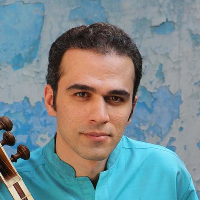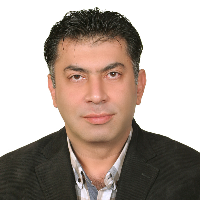Nonsense Syllables (Tarannom) In Iranian Vocal Music* Case Study: Darâmad-e Dastgâh-e Châhârgâh
Author(s):
Abstract:
In Iranian vocal music, singers do not just use poems and words for the creation of music. In this music, in the course of performing the Tahrirs (Melismas) they use additional words that poetry. Melisma covers more than half of the duration of music; therefore Tahrir (Melismas) is the most important embellished element in this music. To perform melisma, singers have to use supplementary words which are called Tarannom. Tarannoms are divided into two groups: meaningful words (Loghavi) and meaningless syllables (Âvâei). The First group includes words which have a clear meaning, for example Jânam, Habib, Aziz and Amân. The Second group apply syllables which do not have any meaning, for instance Hâ Hâ, He He, Hi Hi, He Hâ, Hâ he etc. Meaningless Tarannoms, which this research is discussing about, is the most important implement of performing Melismas. It should be noticed that performing melisma is impossible without nonsense syllables. The purpose of this article is to find out some rules in nonsense syllables (Tarannomhâye Âvâei). In fact, the assumption of this article is that when singers use nonsense syllables, they follow some rules which come from the unconscious. This research will be conducted on 12 transcriptions from the records of Iranian vocal masters, such as Seyyed Ahmad Xân, Soleimân Amirqâsemi, Abolhasan Eqbâl Âzar, Rezâ qoli Mirzâ Zelli, Mohammad Rezâ Shajariân, Razavi Sarvestâni, Râmbod Sodeif, Abdollâh Davâmi, Adib Xânsâri, Ruhangiz, Mahmoud Karimi and Gholâmhosein Banân. All of the notations are in Dastgah-e Châhârgâh (one of the twelve multi-modal cycles in Iranian traditional music). First, we separate the typology of Melismas from notations, and then we will study them. This study applies with a comparative - analytic method. Results of this research, in practice, can have educational application for singers and can lead them to know about the usage of Tarannoms. Moreover, in theoretical part, finding these rules helps us to know how to use these nonsense syllables. We can also study interdependency between Dastgahi music and Persian language. Undoubtedly, the most important concept that can be received of this article is the special role of "â" sound in order to organize nonsense syllables (Tarannomhâye Âvâei). Also, one of the fundamental issues in the use of vowel by Iranian classical singers, is the interaction between "â" and "e" in organizing independent Tahrirs out of poetry. In other words, these two vowel sounds and their various compounds are the main tool of use of vowel in independent Tahrirs such as use of plectrum in instrumental music. It seems that the choice of these two vowel sounds for Tahrirs performance is rooted in phonology issues. As result, the study and analysis of various Melismas in this article indicate, contrary to the general belief that these Tarannoms do not have any rules, that they have multiple rules emanated from melodic texture, emotional content of Melismas, modal traits, articulation, aesthetic correspondence of musical phrases, and in the end, the accent of Persian language.
Keywords:
Language:
Persian
Published:
Honar-Ha-Ye-Ziba: Honar-Ha-Ye Mosighi Va Namayeshi, Volume:16 Issue: 43, 2011
Page:
23
magiran.com/p1022286
دانلود و مطالعه متن این مقاله با یکی از روشهای زیر امکان پذیر است:
اشتراک شخصی
با عضویت و پرداخت آنلاین حق اشتراک یکساله به مبلغ 1,390,000ريال میتوانید 70 عنوان مطلب دانلود کنید!
اشتراک سازمانی
به کتابخانه دانشگاه یا محل کار خود پیشنهاد کنید تا اشتراک سازمانی این پایگاه را برای دسترسی نامحدود همه کاربران به متن مطالب تهیه نمایند!
توجه!
- حق عضویت دریافتی صرف حمایت از نشریات عضو و نگهداری، تکمیل و توسعه مگیران میشود.
- پرداخت حق اشتراک و دانلود مقالات اجازه بازنشر آن در سایر رسانههای چاپی و دیجیتال را به کاربر نمیدهد.
In order to view content subscription is required
Personal subscription
Subscribe magiran.com for 70 € euros via PayPal and download 70 articles during a year.
Organization subscription
Please contact us to subscribe your university or library for unlimited access!




